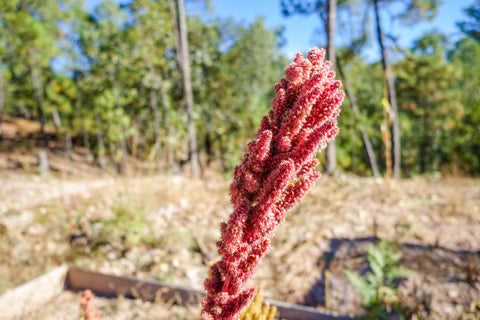Why Andale! Instead of other fuels?
There’s a staggering quantity of endurance fuels out there; gels, bars, powder mixes, blocks, waffles and so many more. This goes to show that not two athletes are the same when it comes to what they want to eat on the go.
 Where Andale! truly stands out is if you want to be fueling endurance on real, wholesome, untransformed food.
Where Andale! truly stands out is if you want to be fueling endurance on real, wholesome, untransformed food.
Most every other product out there is a chemical and/or an extract. That means you either consume an artificial fuel created through industrial chemistry (like taurine) or the extraction and concentration of a specific compound found in food (like maltodextrin, which comes from starch, for example), thus eliminating everything else that food naturally came with. In both cases, you end up consuming something that has been engineered to have an ultra-specific effect, and all too often, that comes with a series of potential undesirable side effects like insulin resistance or gastrointestinal tract irritation.
Andale! Vs “The Syrups”
Brown rice syrup, tapioca syrup, dextrose, caramel, evaporated cane juice… Whatever they call it, its real name is sucrose, and it’s the exact same thing as table sugar. Some of these have an even higher glycemic index than refined sugar, which means it seeps right through your intestinal lining and into your bloodstream… straight to your liver. Hence the sugar rush. And the crash. And the abnormal insulin response.
Andale! Vs Extracts
We believe that the “health secret” of our Raramuri friends in the Sierra Tarahumara is simply to eat real food instead of excessively focusing on one or more of its components via some extraction process. Breaking food down to chemical compounds seems a narrow way to look at nutrition and removes the complex interactions between nutrients from the equation.
Extracts are an ultra-specific breakdown, an isolation of a single component that comes from a food item. A lot of extracts even come from maize, in various forms of polysaccharides like glucose polymers. The end result is the exact same as with any other “processed sugar”; fast digestion through the gastrointestinal tract, which brings potential irritation and a modified insulin response, more informally known in the endurance world as “upset stomach” and “sugar crash”.
Andale! Vs Maltodextrin
This is one seen often on ingredients lists. Although it is technically defined a complex carbohydrate, maltodextrin has a high glycemic index, more than double that of table sugar. We are not a big fan because its widespread use stems from the fact that it’s cheap (unless specifically mentioned, it comes from GMO crops) and it doesn’t have to be labelled as sugar on the ingredients list. More and more science is pointing out that it represents a health risk for gastric diseases.
Andale! Vs Fructose
We’re already not too keen on sugar focused extracts. But that one, specifically in its high-fructose form, is the worst. Although fructose is extracted from fruits, it is deprived of the dietary fiber that encapsulates it in nature, and concentrated to ratios of up to 90% (in the glucose mix), which makes it an absolute hack for the human body. It is quickly turned into fat by the liver and is known to cause inflammation, on top of everything else. We believe that no endurance fuel worthy of that name should use this ingredient in any form.
Andale!: Fuel from nature
 Andale! is, simply, roasted ground whole-kernel maize, organic chia seeds and natural electrolytes - that’s it.
Andale! is, simply, roasted ground whole-kernel maize, organic chia seeds and natural electrolytes - that’s it.
When you consume Andale!, you get the whole nutrition from maize, not only its carbohydrates. With each scoop, you get:
- Fiber content, which means a regulated digestion pace and better satiety
- Protein, which also helps eliminate blood sugar spikes and crashes
- B-complex vitamins (B1, B2, B3, B5, B6, B12 and folic acid)
- Antioxydants, associated with cardiovascular and blood protection
- Minerals (such as calcium, iron, magnesium, phosphorous, potassium and zinc)
All that in its natural form, complete and untampered, like it has been consumed by the folks in the Sierra Tarahumara and many other indigenous peoples for centuries.
